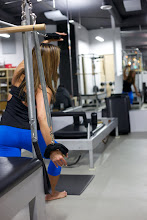 happy holidays all! i’ve been having the time of my life this last quarter, with fantastic new clients, new class programs and new schedule that includes a barre burn class at equinox west hollywood!
happy holidays all! i’ve been having the time of my life this last quarter, with fantastic new clients, new class programs and new schedule that includes a barre burn class at equinox west hollywood!as described by the club, it’s a “total body workout that slims your hips, tightens your thighs, lifts your seats and mobilizes your metabolism. utilizing ballet movements, intelligent isometrics, challenges in rhythm, range of motion and progressive core training, your body heals, tightens, strengthens, so you look, feel and move better!”
the class definitely lives up to this description so i hope people who are looking for something new to do can come check it out and stick with it!
if you want to condition your body into straight up sexiness and learn how those dancers move with such strength and ease, then this class is for you! i share my background and lifelong love of commercial dance with everyone in class and will help you get there. we use the same foundational moves in pilates that are based in low resistance, precision, flow, control and long lines. we add some dynamic level changes (like high kicks and jumps) for more core destabilizing. it’s only 45 minutes so everyone gets in their cardio and their sculpting “burn” in at the same time.
friday morning workouts are meant to be fun. weekly attendance will get you strong, limber, poised and ready for that photo shoot or in shape for that long-overdue beach trip! come check us out at #equinoxfitness west hollywood 9am this friday, december 16th for the last class of the year. we get to start back up again January 6, 2012. see you soon!





